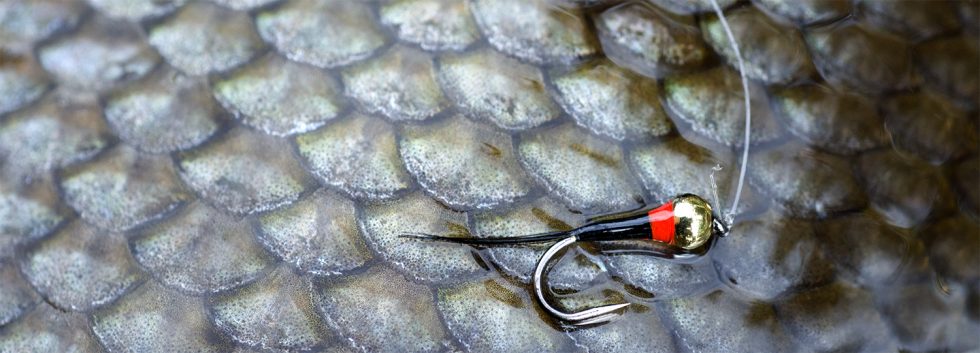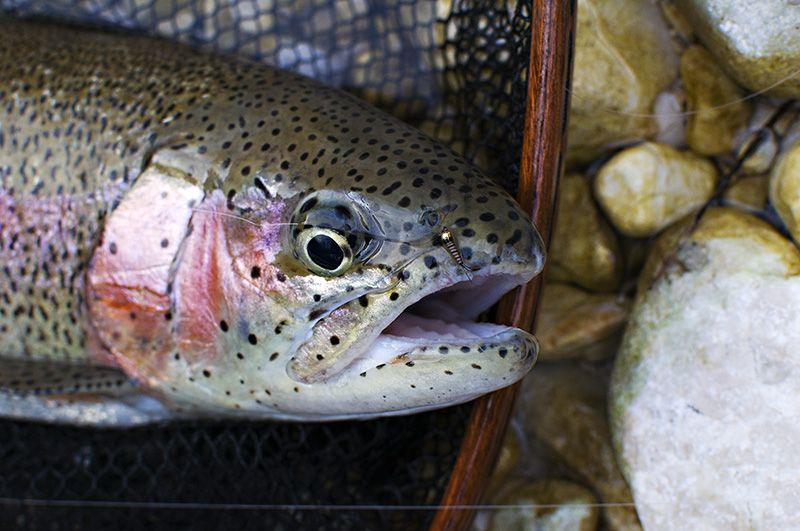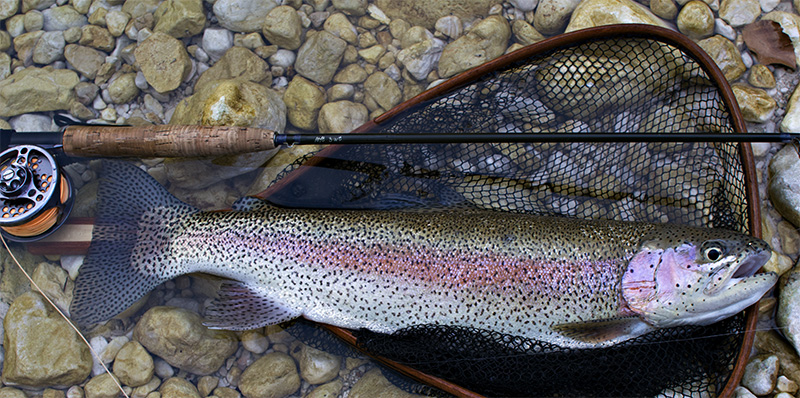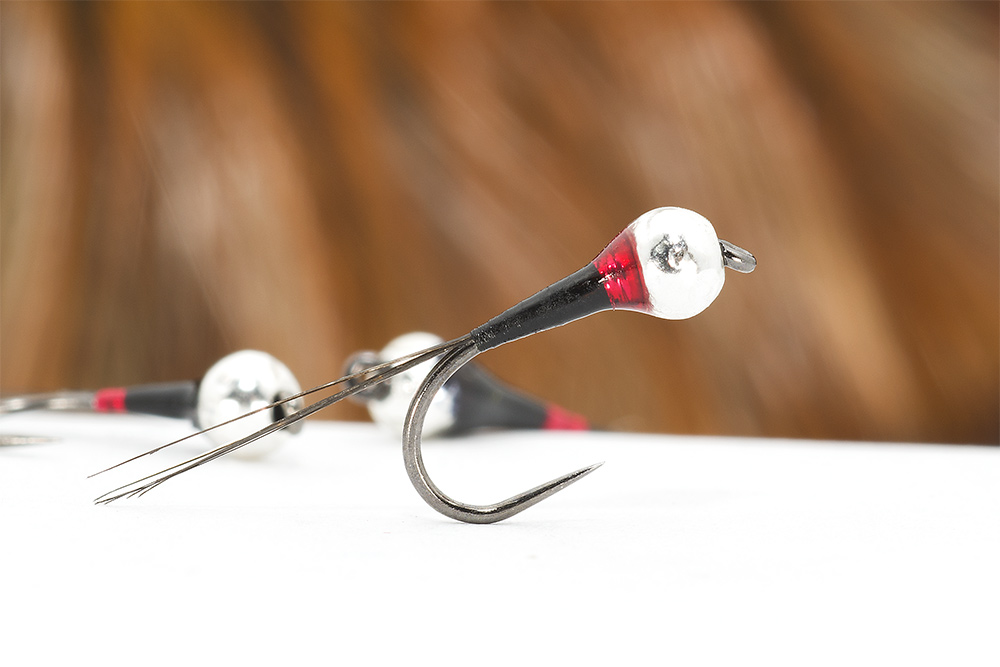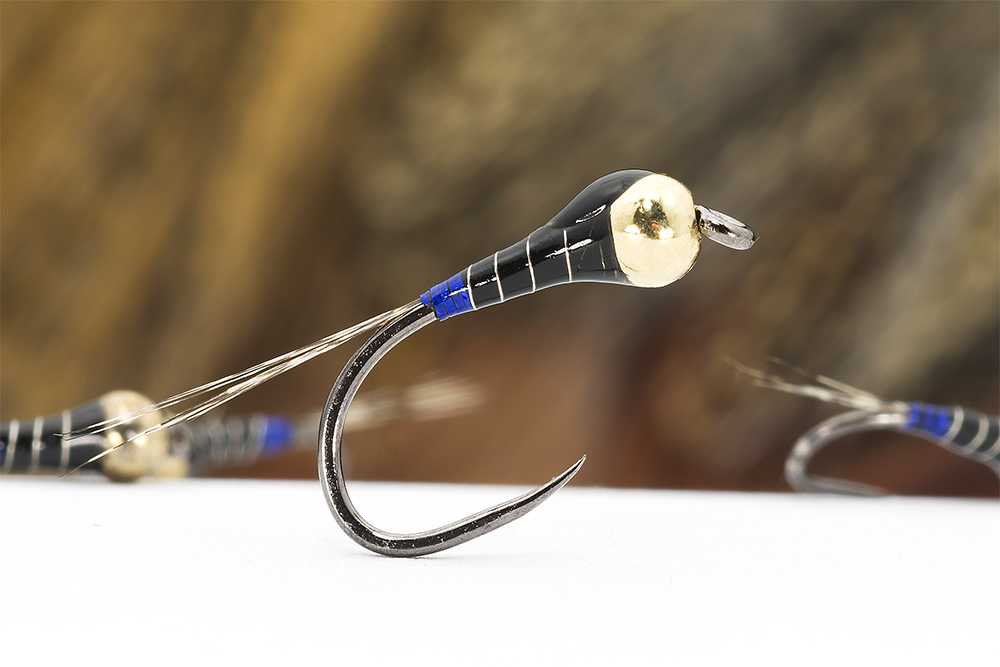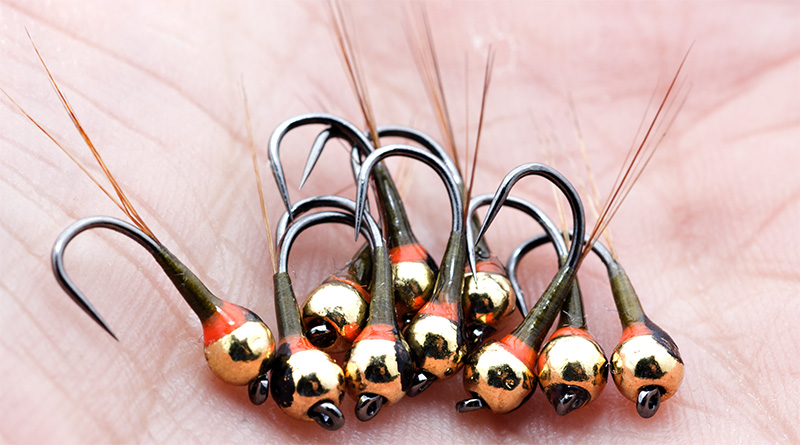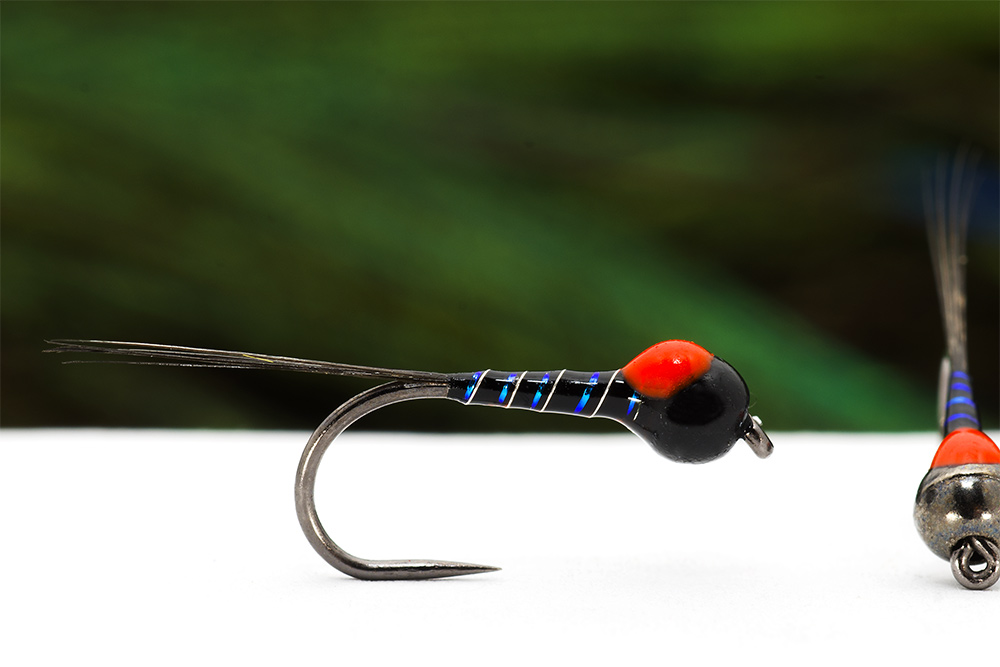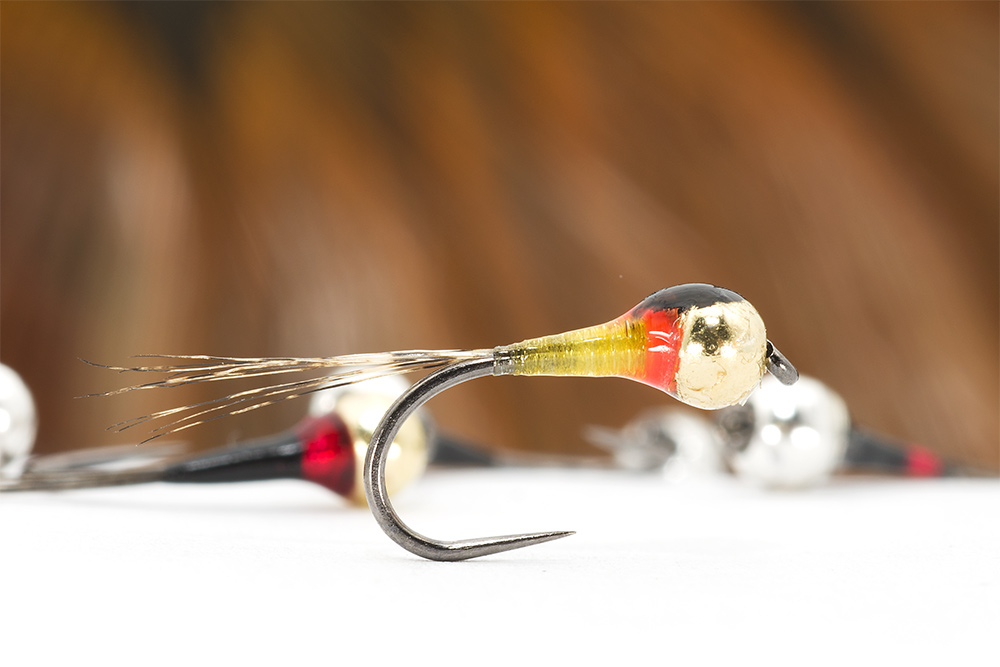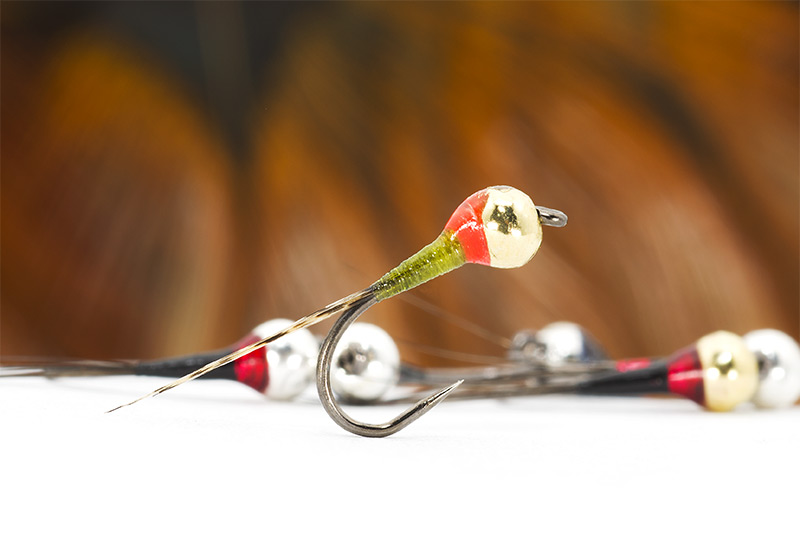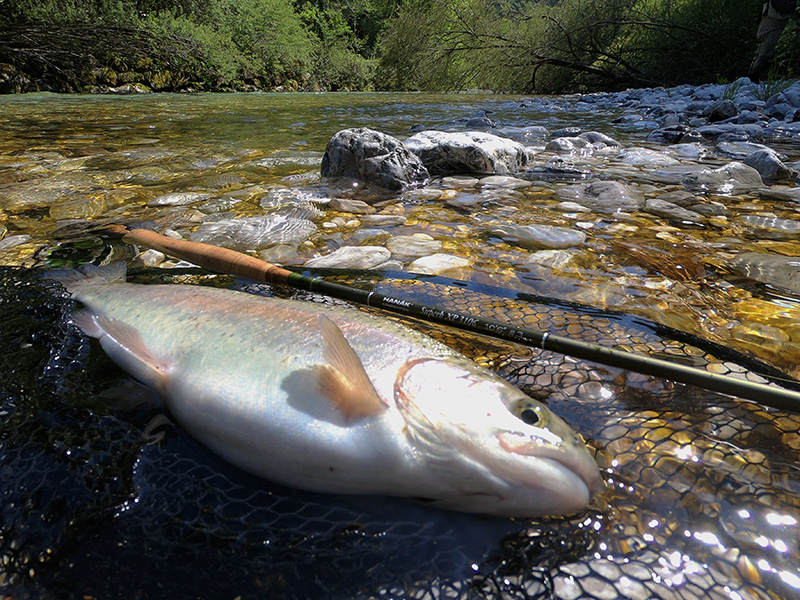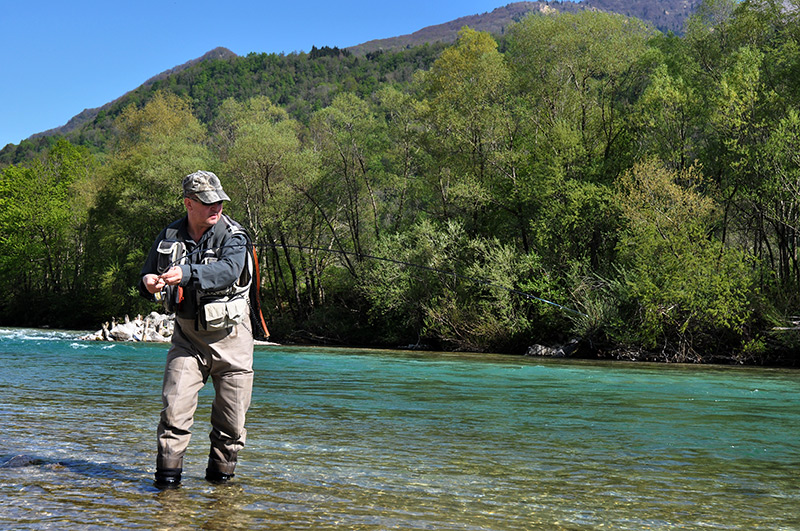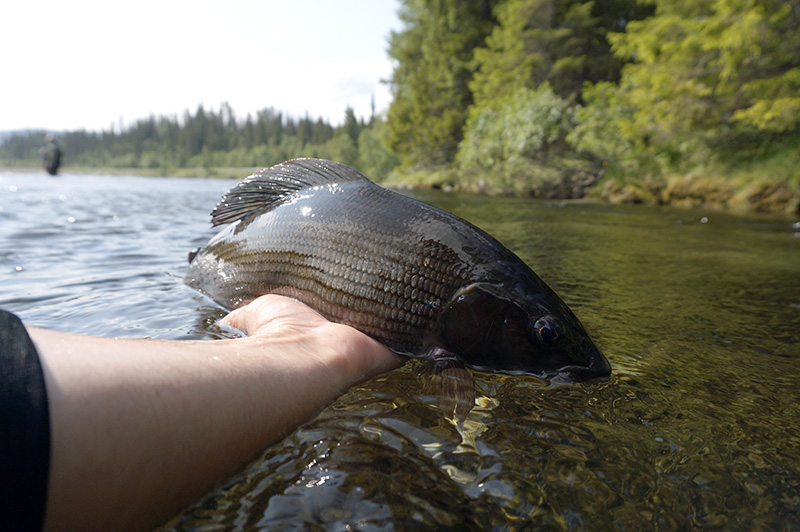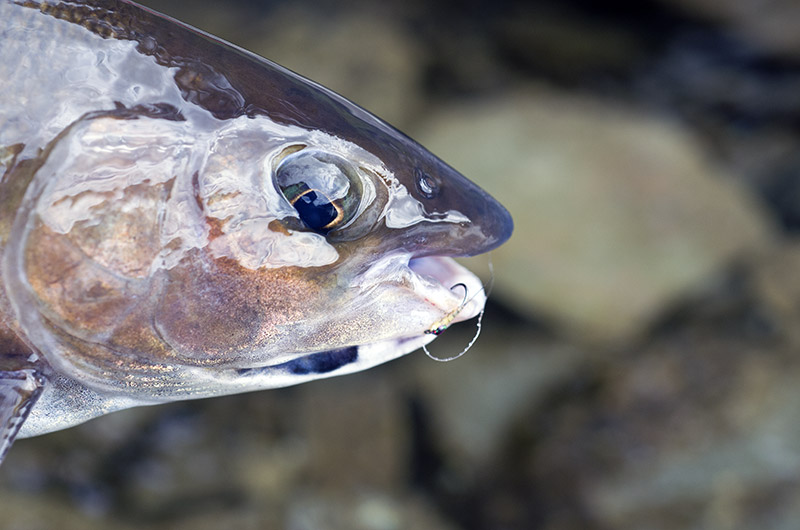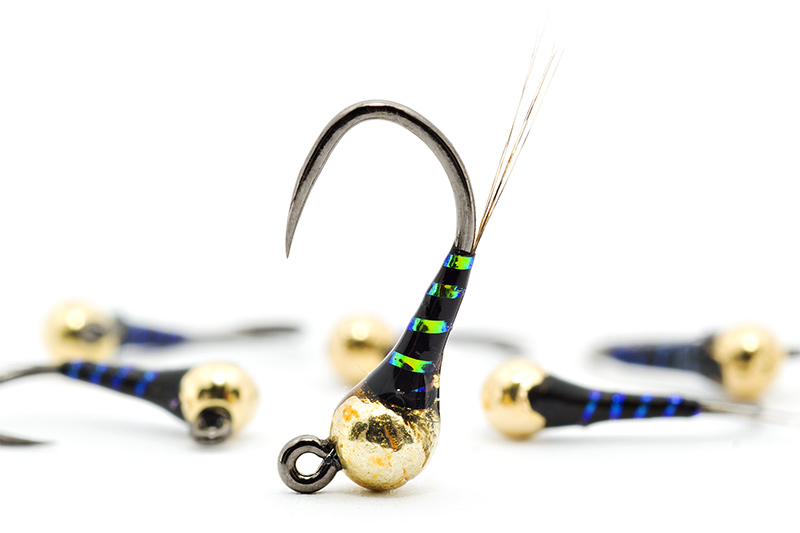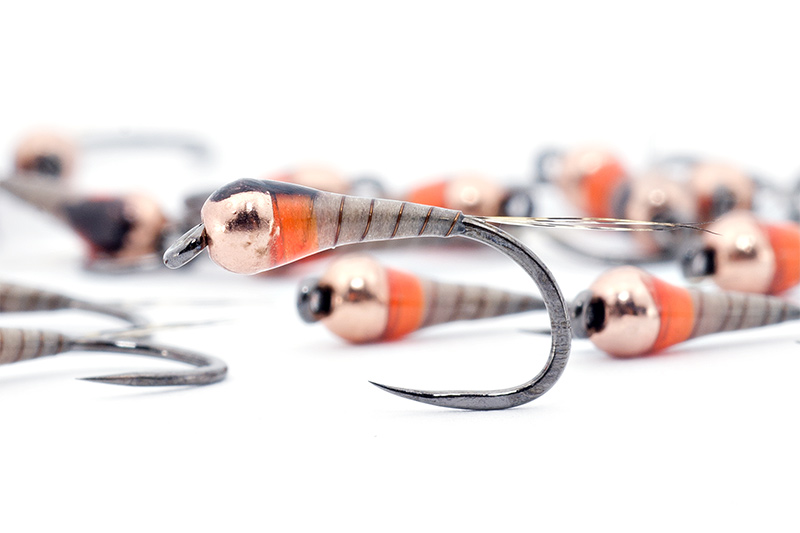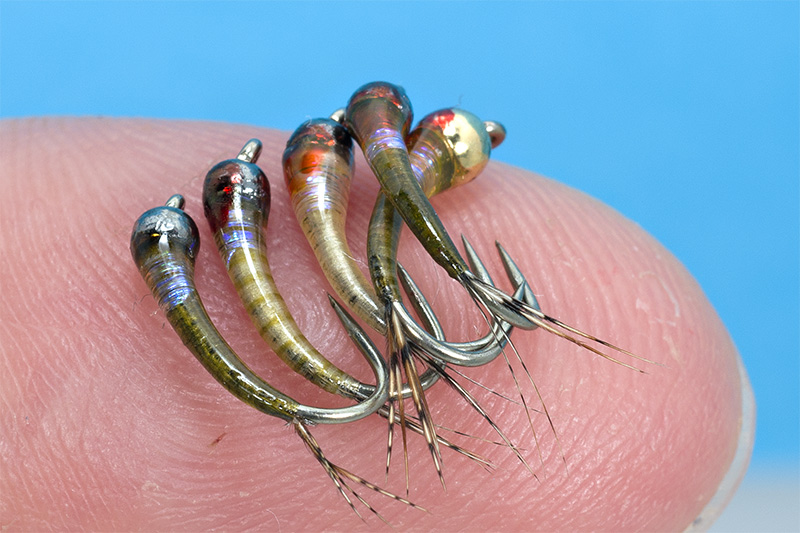De Diawl Bach vlieg wordt op verschillende manieren mee gevist. Een uitgebreid artikel is hieronder weergegeven.
7 Diawl Bach fly patterns for stillwater trout
The Diawl Bach is a classic Welsh fly pattern which resembles a wide range of nymphs and is one of the most effective stillwater flies. Here are seven Diawl Bach fly patterns to try.
What is a Diawl Bach?
The Diawl Bach is a classic Welsh nymph pattern - the name is Welsh for "little devil". It's one of the most popular nymph patterns for rainbow trout and brown trout on lakes, reservoirs and stillwaters not only in Wales but across the rest of the UK.
How do you fish Diawl Bachs?
Diawl Bachs are generally fished on a floating line usually on the top and middle dropper and often alongside an attractor pattern, such as a blob. The style of fishing is similar to that of buzzers. However, while buzzers are now more commonly fished beneath a bung or strike indicator, Diawl Bachs are generally twiddled back with a very slow figure eight retrieve, or fished static.
Are they difficult to tie?
Diawl Bachs are quite slim and sparsely tied flies and are easy enough for the novice to tackle and achieve good results. The only really fiddly bit is attaching the "beard" or throat hackle beneath the fly. It takes quite a bit of practice to get the right hook (and to learn how to do it without stabbing the fingers on the hook) but it's easy when you learn how.
What materials will I need?
Diawl Bachs are tied on straight hooks, generally those with a heavier gauge wire, like the Kamasan B175 or Fulling Mill Competition Heavyweight or Competition Special. You won't need many materials and you'll probably have most of them already. The body is typically peacock herl, but you can also use organza, while the tail and throat hackle are made from cock or hen fibres. Ribs can be the wire or tinsel of your choice and cheeks are optional.
Which Diawl Bach fly patterns work best?
This is one of those fly patterns where fly tyers have essentially gone freestyle and the original patterns have been almost forgotten. Pretty much all of those I've tried have worked well, so tie (or buy) a mixture of Diawl Bachs in various colours from blacks to browns, as well as some more colourful variants.
1. Ninja Diawl Bach
Hook: Fulling Mill Competition Heavyweight Black size 10
Body: Black peacock herl
Rib: Red UTC Tinsel with Opal Mirage back
Throat hackle: Dyed black hen fibres
Tail: Dyed black hen fibres
Cheeks: Jungle Cock
Thread: Uni 8/0 black thread
Body: Black peacock herl
Rib: Red UTC Tinsel with Opal Mirage back
Throat hackle: Dyed black hen fibres
Tail: Dyed black hen fibres
Cheeks: Jungle Cock
Thread: Uni 8/0 black thread
2. Red Holographic Diawl Bach
Hook: Size 10 Kamasan B175
Body: Black peacock herl
Rib: Red holographic tinsel
Throat hackle: Hen hackle fibres
Tail: Hen hackle fibres
Cheeks: Goose biots
Thread: Uni thread 8/0 in black
Body: Black peacock herl
Rib: Red holographic tinsel
Throat hackle: Hen hackle fibres
Tail: Hen hackle fibres
Cheeks: Goose biots
Thread: Uni thread 8/0 in black
3. UV Quill Diawl Bach
Hook: Size 12 Kamasan B175
Body: Peacock herl
Rib: UV quill holographic tinsel
Throat hackle: Hen hackle fibres
Tail: Hen hackle fibres
Head: Red thread
Thread: Uni thread 7/0 in trico
Body: Peacock herl
Rib: UV quill holographic tinsel
Throat hackle: Hen hackle fibres
Tail: Hen hackle fibres
Head: Red thread
Thread: Uni thread 7/0 in trico
4. Shaggy Diawl Bach
Hook: Size 10 Fulling Mill Competition Special
Body: Hare's mask in picric
Rib: Spanflex olive
Throat hackle: Olive grizzle saddle hackle
Tail: Olive grizzle saddle hackle
Hood: Peacock mylar
Cheeks: Jungle Cock
Thread: Veevus 10/0 olive thread
Body: Hare's mask in picric
Rib: Spanflex olive
Throat hackle: Olive grizzle saddle hackle
Tail: Olive grizzle saddle hackle
Hood: Peacock mylar
Cheeks: Jungle Cock
Thread: Veevus 10/0 olive thread
5. Black Rainbow Diawl Bach
Hook: Size 10 Fulling Mill Heavyweight Champ
Body: Peacock eye fibre
Rib: Veevus mosaic holographic tinsel
Tail: Cock hackle fibres black
Throat hackle: Cock hackle fibres black
Cheeks: Jungle cock
Thread: Veevus 10/0 black thread
Body: Peacock eye fibre
Rib: Veevus mosaic holographic tinsel
Tail: Cock hackle fibres black
Throat hackle: Cock hackle fibres black
Cheeks: Jungle cock
Thread: Veevus 10/0 black thread
6. Bibio Diawl Bach
Hook: Kamasan B175 size 10
Body: Black peacock herl
Middle: Red peacock herl
Rib: Silver wire
Throat hackle: Black cock hackle
Tail: Black cock hackle
Cheeks: Jungle cock
Thread: Uni 8/0 black thread
Body: Black peacock herl
Middle: Red peacock herl
Rib: Silver wire
Throat hackle: Black cock hackle
Tail: Black cock hackle
Cheeks: Jungle cock
Thread: Uni 8/0 black thread
7. Organza Traffic Light Diawl Bach
Hook: Kamasan B175 size 10
Body: Black organza
Rib: Pearl and red holographic tinsels medium
Throat hackle: Black cock hackle
Tail: Black cock hackle
Cheeks: Jungle cock
Thread: Uni 8/0 black thread
Body: Black organza
Rib: Pearl and red holographic tinsels medium
Throat hackle: Black cock hackle
Tail: Black cock hackle
Cheeks: Jungle cock
Thread: Uni 8/0 black thread
bron: http://flyandlure.org/



















